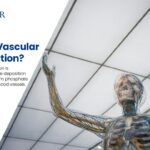Veins are the blood channels that transport oxygen-depleted blood away from the heart and lungs and toward the organs and body tissues. Veins don’t have smooth muscles within their walls but valves are present within the veins that permit movement and maintain the normal blood flow. Inactivity for a long time and potential risk factors such as old age, unhealthy lifestyle, obesity, pregnancy, and constipation can lead to damaged and weakened veins and valves that can cause venous diseases. Here are the 3 Signs that you need vein treatment to avoid complications in your vascular health.
Venous Disease
Venous diseases are quite common worldwide. The majority of adults suffer from venous conditions such as varicose veins, spider veins, reticular veins, etc. Chronic Venous Insufficiency (CVI), is the most common form of venous illness and the main cause of varicose, reticular, and spider veins.
In venous diseases or CVI, due to the increased pressure on the walls, blood flows backward or reflux occurs as the veins are weak and damaged. The blood pools inside the veins making them distorted and causing further damage. It occurs mostly in the lower limbs or legs.
3 Signs That You Need Vein Treatment
If you see any of the following signs or symptoms causing you discomfort, you should consult a vascular specialist
- Twisted or bulging veins that can even be seen superficially under the skin. Discoloration due to the blood pooling.
- Pain and feeling of heaviness in the legs accompanied by itching and swelling.
- Cramping of legs especially at night.
If you experience any of the mentioned symptoms, consider a proper vein treatment. Get tailored advice from a vascular specialist and proceed with the best treatment options. Treatment options include natural remedies, medications, compression therapy, or surgical intervention depending on the severity of the condition.
Alternate vein treatment options
Confused about whether to get a vein treatment or not? In this article, we will make it easy for you to recognize and realize if you are a suitable candidate for getting vein treatment or if you can treat your vein disease without it.
Compression Stocks
These are a type of socks specifically designed for people who are suffering from venous diseases like varicose veins. Their function is to compress the veins in your leg, this encourages the blood to flow from the lower extremities to the lungs and heart. The strength of compression can vary from one stocking to another depending on what you need. Compression therapy is a great option but is rarely chosen as a stand-alone treatment option, it always accompanies other alternatives.
Phlebectomy
Multiple small incisions are made in this process to completely remove the vein that is causing the problem. It is recommended to use compression stockings for weeks after this procedure for better results.
Vein ablation
Vein ablation is a minimally invasive procedure of removing troublesome veins via laser energy or the use of radiofrequency. This causes the vein to collapse, the collapsed vein is then absorbed by the body itself. Hence, no surgery needs to be performed for this.
Sclerotherapy
This minimally invasive procedure is known to cure the spider veins, also known as the varicose veins. This method involves a controlled irritation of the veins causing the vein to collapse. Instead of using radiofrequency or laser for this procedure, a sclerosis agent (that is a drug containing a chemical irritant) is used. In addition, sitting or standing still for extended periods of time is discouraged by medical specialists. Additionally, it is suggested to move around as much as you can to keep the circulation moving.




